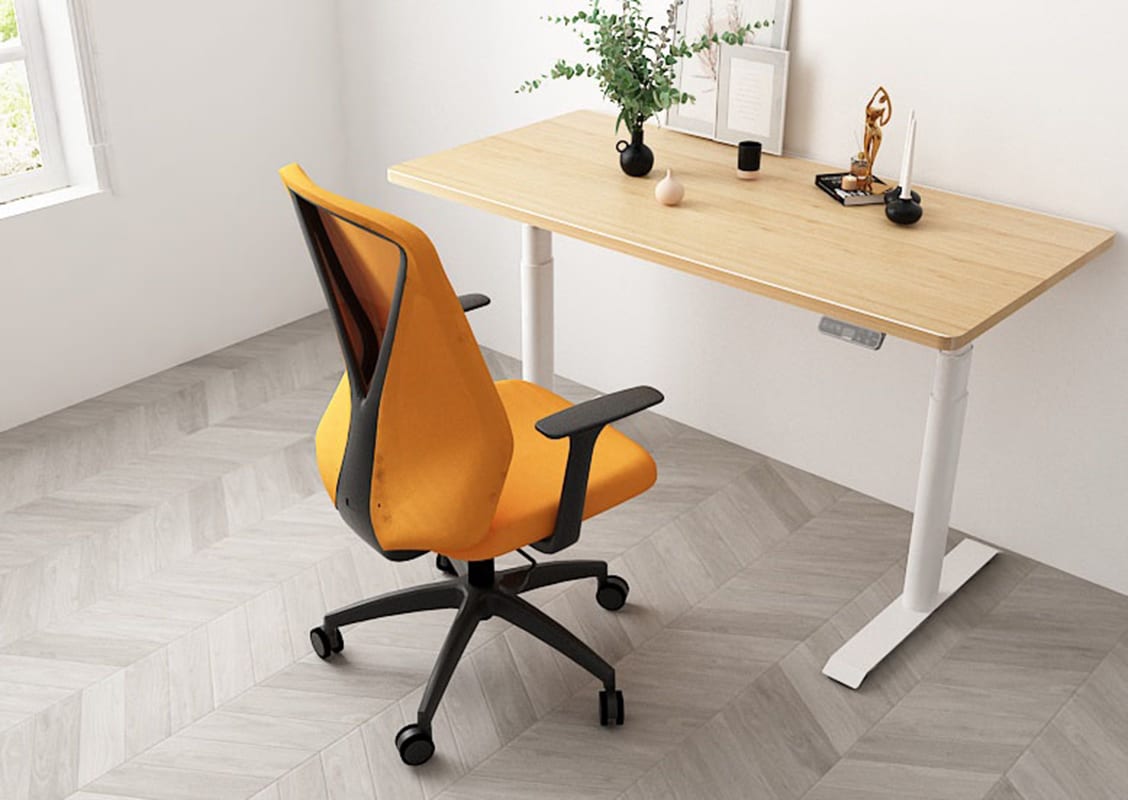In the changing world of work, the idea of ergonomic design, which changes the way things are done, is in the spotlight. This revolutionary concept has revolutionised our interaction and perspective with office furniture, redefining the very essence of how we engage with our surroundings. Within this intricate ergonomic excellence, the meticulous crafting of chair designs and the thoughtful curation of materials stand as pivotal factors.
As we embark on a collective journey towards cultivating sustainable ecosystems, it becomes not just a consideration but an ethical imperative to get deep into the nuances of ergonomic chair design and the conscientious selection of materials that construct them. Let's figure out how the cutting edge of ergonomic innovation, the principles of sustainable progress, and the changing needs of our modern workplaces all work together in perfect harmony.
The Evolution of Ergonomic Design
The era of generic, one-size-fits-all furniture solutions has gracefully faded into the past. In its place emerges a profound shift in the character of ergonomic design, pivoting towards a personalised approach that depicts the very essence of individual requirements. This transformative wave is especially pronounced within the realm of kid's desks and children's desks, where the principles of ergonomic innovation weave seamlessly with the unique needs of young learners.
With a significant chunk of a child's day spent seated, busy with studies or creative endeavours, the significance of ergonomic support assumes paramount importance. Within this context, the rise of height-adjustable desks takes centre stage, a testament to the conscious consideration of the ever-changing demands of growing bodies. These desks offer a canvas where young minds can adjust and adapt, fostering proper posture and mitigating the pressures that unfriendly seating might impose on tender spines.
Sustainable Material Selection: A Necessity

As our planet echoes with the urgency of environmental consciousness, the process of choosing materials for ergonomic chairs has gracefully transcended its mere aesthetic dimension. It's a journey that strides hand-in-hand with the ethos of sustainable development, steering us towards a future anchored in eco-friendly and renewable resources. In this relation of conscious choices, materials like fine wood, the grace of bamboo, and the rebirth of recycled plastics have claimed the spotlight.
Their emergence isn't just a mere trend; it's a reflection of their low carbon footprint and their gentle effect on ecosystems. As the collective heartbeat of consumers echoes with the rhythm of ecological responsibility, manufacturers are amplifying their response, weaving these materials into the very fabric of their designs. This meticulous harmony doesn't merely endorse sustainability; it's something that adds an unparalleled aesthetic flair to the chair's narrative.
The Role of Innovation

The synergy between sustainable material choices and technological advancements has given rise to a new era of ergonomic chair design. For instance, the incorporation of biodegradable polymers not only ensures durability but also reduces the environmental burden during disposal. Similarly, the integration of smart sensors in chairs allows users to receive real-time feedback on their posture, reminding them to adjust their seating positions periodically. This fusion of innovation, sustainability, and technology exemplifies the forward-thinking approach that is shaping the future of ergonomic design.
Balancing Aesthetics and Functionality
While sustainability and comfort are paramount, aesthetics also play a pivotal role in ergonomic chair design. Aesthetics influence our emotional connection to the workspace, impacting overall well-being and productivity.
Fortunately, contemporary designers have embraced the challenge of creating chairs that seamlessly blend form and function. This delicate balance ensures that ergonomic chairs not only support the body but also enhance the visual appeal of the workspace. The integration of vibrant colours, organic shapes, and sleek lines allows chairs to become artistic statements that reflect the ethos of the workspace.
Kid's Desks: Cultivating Healthy Habits and Inspiring Creativity

The significance of ergonomic design extends to a kid's desk, where the foundation for healthy posture and habits is laid. Children's developing bodies are particularly vulnerable to the adverse effects of prolonged poor posture. A height-adjustable desk caters to their growth by adapting to their changing needs. Incorporating elements like tilting desktops and footrests further encourages proper posture and prevents discomfort. By introducing ergonomic principles at an early age, we empower children to prioritise their well-being and develop lifelong habits of self-care.
Children's desks are more than just pieces of furniture; they are spaces where young minds embark on journeys of learning and creativity. The design of these desks greatly influences the learning experience. Ergonomically designed children's desks make it easier for kids to concentrate on their work by reducing distractions and pain. Also, features that can be changed, like storage spaces and lights that can be turned on and off, help make a study space that is organised, interesting and fosters a sense of responsibility and ownership.
Conclusion
Ergonomic desk chair design and the use of eco-friendly building materials are two examples of how the workplace is adapting to the modern environment. The convergence of relaxed sitting, ecological consciousness, and cutting-edge design has made possible chairs that benefit both people and the planet. Height-adjustable children's desks and lovingly constructed children's desks are just two examples of how ergonomic principles encourage healthy habits and enhance learning experiences. As we go towards a more sustainable future, ergonomic furniture is a prime example of how form and function can coexist without sacrificing the other. With each ergonomic chair produced at Flexispot, we are able to build environments that show our commitment to a better world.